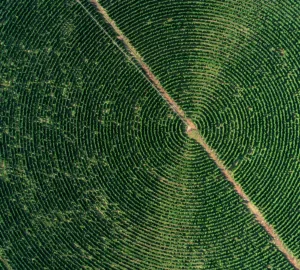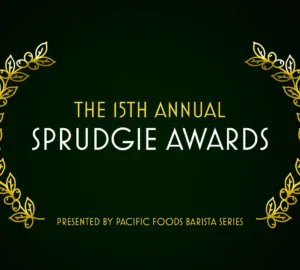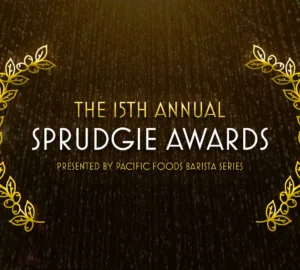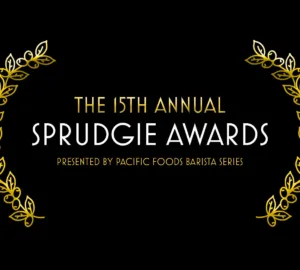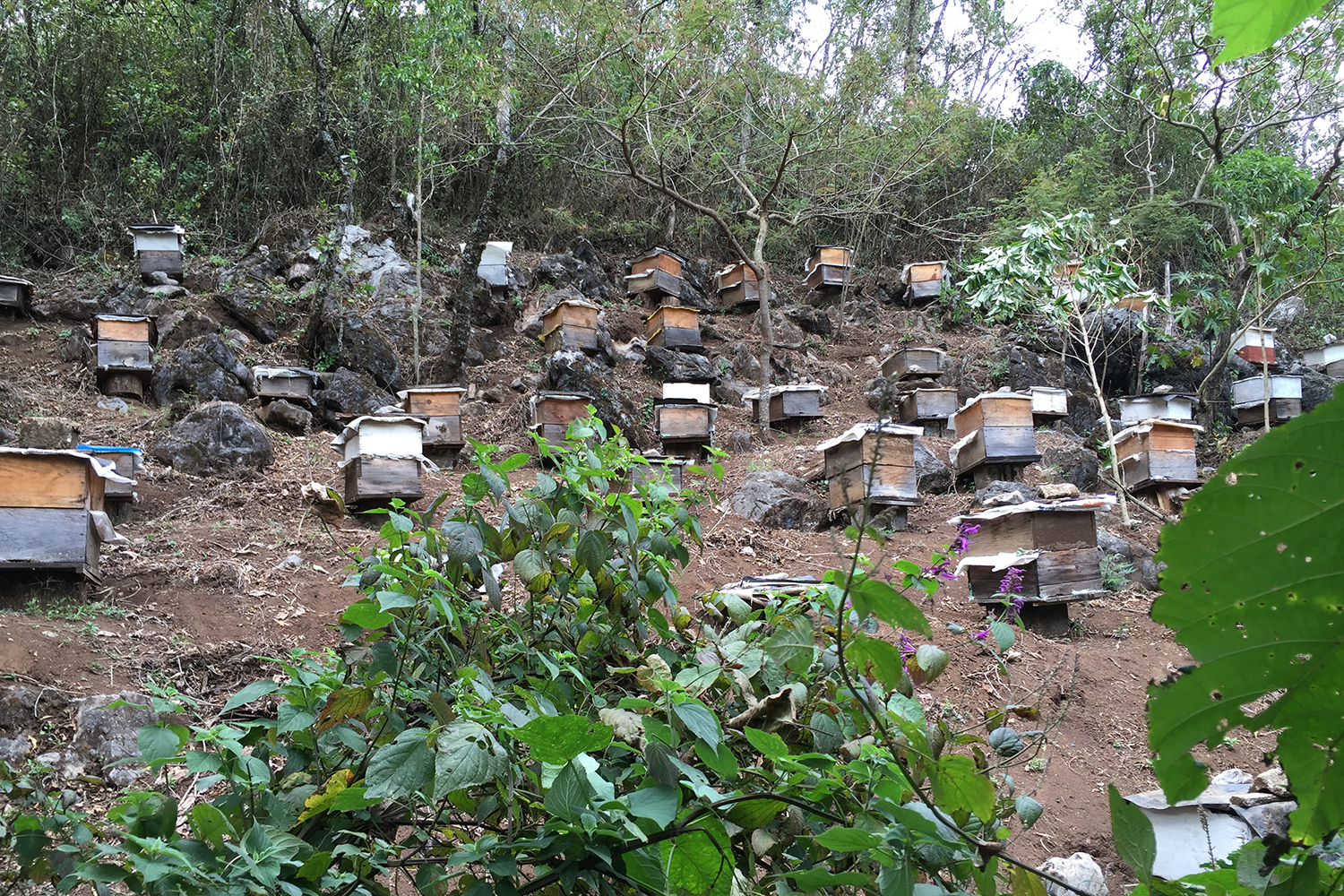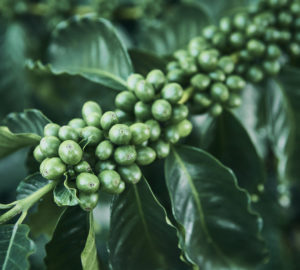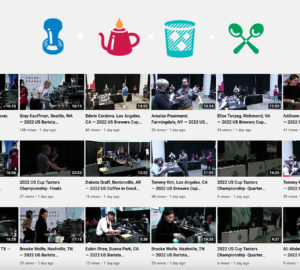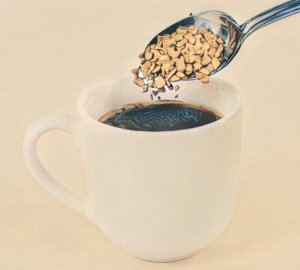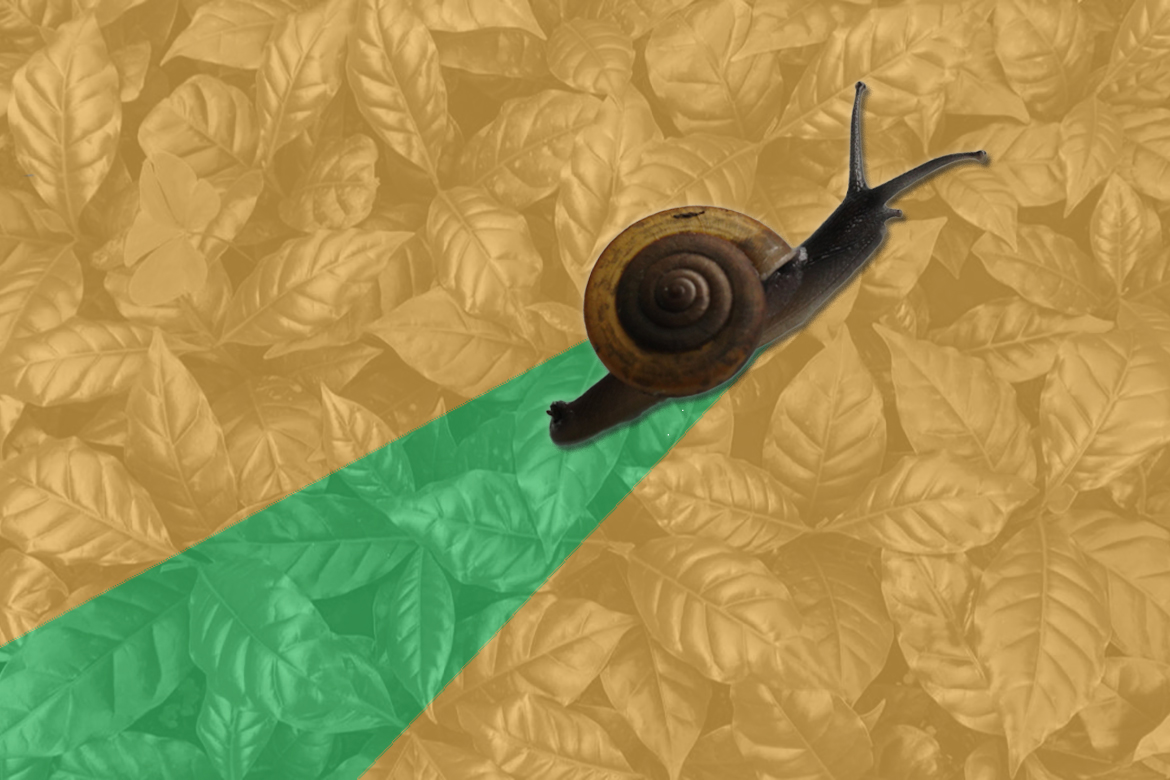
The modern bout of leaf rust has been a scourge for coffee farmers for nearly a decade now. Though it hasn’t quite dominated the list of woes Central American coffee producers are currently dealing with—that “honor” goes to climate change and artificially low coffee prices—leaf rust, or roya, is nonetheless still a very real problem many farmers face (and climate change is only making it worse).
And the progress towards finding a cure for this devastating fungus is sluggish, by which I mean the potential antidote is slimy and moves very, very slowly. It’s snails. Snails may be the answer. As reported by Modern Farmer, the internet’s preeminent source of all snail-based agriculture news, the Asian trampsail has an appetite for the fungus that causes leaf rust.
The findings come from a new study published by researchers at the University of Michigan, who when conducting fieldwork in Puerto Rico in 2016 noticed “noticed tiny trails of bright orange snail excrement on the undersurface of coffee leaves afflicted with coffee leaf rust.” Over the course of the next few years, the researchers conducted lab experiments and performed field research and found that the Asian trampsnail—typically a plant eater—had altered its dietary habits and now subsisted on the roya-causing spores. In one test, the researchers found a 30% decrease in the amount of leaf rust after giving the snails a mere 24 hours of snacking.
“Of all the natural enemies I have been studying, these gastropods in Puerto Rico most obviously and effectively clear the leaves of the coffee leaf rust fungal spores,” Zachary Hajian-Forooshani, the paper’s lead author, states.
But before we start sprinkling these hungry little gastropods across coffee farms far and wide, the study is quick to note that the Asian trampsnail is widely considered a pest and is “one of the world’s most widely distributed invasive land snails.” The gastropod also presents another problem in the fight against leaf rust: while it eats the spores that cause leaf rust, it also eats the fungus Lecanicillium lecanii, another natural enemy of roya. And while the snail hungers for the leaf rust spores, it is unclear if the spores “remain viable after they pass through the guts of the snails.”
Of course there are other potential issues with introducing non-native flora or fauna into an ecosystem, as illustrated by the historical documentary seen below:
Nonetheless, the findings leave researchers hopeful that gastropods may play some role in eliminating leaf rust in the future. Similar experiments would still need to be performed in other parts of Latin America before we officially crown any species of snail the hero of coffee. It’s at the very least, a novel new approach to dealing with a serious problem affecting coffee growers. So thanks you hungry little buggers, keep up the good work, but lay off the Lecanicillium lecanii, will ya?
Zac Cadwalader is the managing editor at Sprudge Media Network and a staff writer based in Dallas. Read more Zac Cadwalader on Sprudge.















